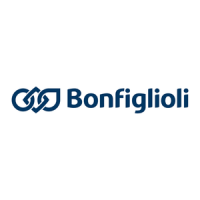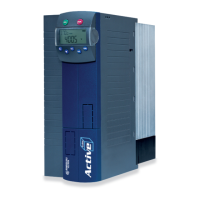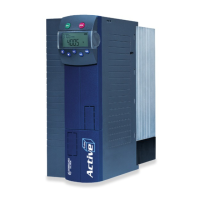
Do you have a question about the BONFIGLIOLI ACTIVE Cube ACU 401-15 and is the answer not in the manual?
| Brand | BONFIGLIOLI |
|---|---|
| Model | ACTIVE Cube ACU 401-15 |
| Category | Inverter |
| Language | English |
Specifies the frequency inverter's design according to safety regulations and intended use in industrial plants.
Identifies potential hazards like electrical, electrostatic, thermal, and falling equipment risks.
Instructs users to comply with and not remove safety information and danger signs on the inverter.
Operator responsibilities including ensuring accessibility of regulations and compliance with country-specific laws.
Defines responsibilities for staff selection, qualification, and general work safety.
Provides safety information for the STO function, emphasizing proper installation and commissioning by qualified staff.
Provides general technical specifications including CE conformity, EMC, UL approval, safety functions, ambient conditions, and protection.
Lists technical specifications for ACU 201 frequency inverters from 0.25 to 1.1 kW at 230 V.
Provides technical specifications for ACU 201 frequency inverters in the 1.5 to 3.0 kW range at 230 V.
Details technical data for ACU 201 frequency inverters covering 4.0 to 9.2 kW at 230 V.
Describes standard mounting for ACU 201 (up to 3.0 kW) and 401 (up to 4.0 kW) units and provides dimensions.
Details standard mounting for ACU 201 (4.0-9.2 kW) and 401 (5.5-15.0 kW) units, including dimensions and fixing brackets.
Explains standard mounting for ACU 401 (18.5-30.0 kW) units, with dimensions and fixing bracket details.
Provides standard mounting instructions and dimensions for ACU 401 (37.0-65.0 kW) frequency inverters.
Describes standard mounting and provides dimensions for ACU 401 (75.0-132.0 kW) frequency inverters.
Covers conductor cross-section dimensioning, mains connection, motor connection, and brake resistor connection.
Explains how to select, edit, and save parameters, including navigation and adjustment possibilities.
Safety checks before switching on mains voltage, including connections and discharge verification.
Guides users through the setup process, including parameter identification, machine data entry, and plausibility checks.
Explains speed sensor connection and configuration, including selection of actual speed source and parameter settings.
Describes how Configuration 30 determines control inputs/outputs and software functions, with various control options.
Details how to set rated motor parameters from the rating plate for control functions and methods.
Describes parameterization of 3-phase machine starting behavior, including flux formation and IxR compensation.
Defines stopping behaviors using Operation mode 630, selectable via logic signals or digital inputs.
Details the search run function for synchronizing the motor speed to a rotating drive after a fault or switch-off.
Explains positioning functions like Reference positioning and Axle positioning, requiring feedback systems.
Details how ramps determine frequency change speed after commands, including acceleration, deceleration, and emergency stop ramps.
Explains motor speed control via the motor potentiometer function using digital signals or control unit keys.
Describes MFI1 configuration as voltage, current, or digital input, with operation modes for analog and digital signals.
Explains MFO1 configuration as digital, analog, or repetition frequency output based on Operation Mode 550.
Details current limit settings to prevent inadmissible load and avoid fault switch-off, extending the current controller.
Explains the voltage controller's functions for monitoring DC link voltage and bridging short-term power failures.
Describes the Technology Controller (PID) for process control like pressure or volume flow, using reference and actual values.
Details field-oriented control systems based on cascade control and machine models, covering Current Controller, Torque Controller, and Speed controller.
Explains the brake chopper transistor and external brake resistor connection, including trigger threshold settings.
Covers motor protection mechanisms for thermal overload and overcurrent, including motor protection switches and I2t monitoring.
Provides a chronological list of the last 16 fault messages, including error codes and descriptions.
Lists actual values of the machine, frequency inverter, and system, including units, display range, and chapter references.
Provides a comprehensive list of parameters organized by function categories like Inverter Data, Digital Inputs, and Control Functions.











